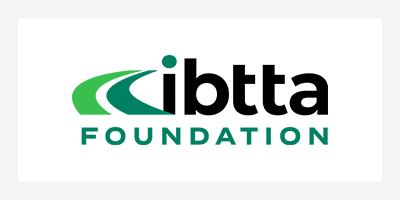- Home
- IBTTA Insights
- New York’s Congestion Pricing Plan Could Point the Way for National Infrastructure Action
Stories
New York’s Congestion Pricing Plan Could Point the Way for National Infrastructure Action


With the transportation community in Washington, DC holding its breath for this evening’s State of the Union address, the nation’s biggest city is reopening a conversation around an essential tool for funding infrastructure and battling traffic gridlock.
New York’s three-phase plan would begin with investments in transit connectivity between the city’s Central Business District (CBD) and outer boroughs, and end with congestion pricing as a way to help fund new infrastructure. The recommendations were tabled this month by the Fix NYC Advisory Panel, and they’re already getting support from the New York Times editorial board.
The city “must first invest in public transportation alternatives and make improvements in the subway system before implementing a zone pricing plan to reduce congestion,” concluded the multistakeholder panel appointed last fall by Governor Andrew Cuomo. “Before asking commuters to abandon their cars, we must first improve mass transit capacity and reliability.”
Unclogging the Arteries
Underlying that strategy is a sense of sheer urgency to solve a pervasive, long-standing problem. The panel report noted that New York is the most congested city in America except for Los Angeles, and the third-most gridlocked in the world after LA and Moscow, with average travel speeds of 6.8 miles per hour across the CBD and 4.7 mph in the Midtown Core. It cited a study this year by The Partnership for New York City that attached a $100-billion price tag to the congestion New Yorkers are expected to endure over the next five years.
It made good sense when the New York Times cast the panel recommendations as an opportunity to unclog the New York’s arteries. While there are political considerations to navigate that may yet scuttle the plan, “the simple fact is that mass transit needs the money and the central city needs relief from snarled traffic,” the editors stated. “It’s long past time to discourage the many motorists who drive into Manhattan every day as a matter of choice, not necessity.”
The bonus for the rest of the country is in the timing: If the conversation in New York takes hold, it will advance one of the most promising funding mechanisms to make an ambitious national infrastructure plan a reality.
A Successful System is a Fair System
Both the panel report and the New York Times editorial focused on a reality that determines the social licence that any road pricing system needs to operate: for a usage charge to succeed, it must be seen to be fair.
“While some may inaccurately claim our proposals are regressive,” the panel members wrote in their letter of transmittal, “the Panel’s recommendations attempt to consider the needs of outer borough commuters and present options for congestion relief to New Yorkers in ways that are both fair and feasible.”
The good news for long-suffering New York commuters is the $1.5 billion per year the system could raise to help renovate and maintain an overwrought public transit network. The panel report cited MTA Chair Joseph Lhota’s June, 2017 comment that “the subway system is no doubt in distress, and we’re here for solutions.”
The funds would come from an $11.52 fee for car drivers entering Manhattan below 60th Street during weekday business hours—a figure equivalent to the E-ZPass charge for a round trip over the East River. The charge for trucks would be set at $25.34, and ride-hailing services—which the New York Times singled out as “potent causes of many traffic headaches”—would pay $2 to $5 per ride.
“Questions of fairness are inevitable,” the New York Times noted, and Mayor Bill de Blasio has been one of the skeptics who would prefer a “millionaire’s tax” to raise funds. But “the panel says that of those who commute to jobs in Manhattan from other boroughs, a mere 4% do so by car—118,000 people. Fewer than 5,000 of them are said to qualify as the working poor,” and for them, a tax credit might be one way to balance the system.
The New York Times made one other point that is essential to local solutions in a city like New York, and to the search for shovel-ready projects that would help jump-start a national infrastructure plan: we know congestion pricing works, because it’s already been proven in major world metropolises like London, Stockholm, and Singapore.
“Implementing new fees and surcharges should always be viewed as a last resort, but the dire state of the NYC subway system demands action,” the panel report concluded. “The level of congestion within Manhattan’s CBD requires action, and it is time to move forward on the concept which has been studied and debated in NYC for over a decade. To remain a world-class city and region, New York must address the increasing congestion on our roadways and bring the subway system back to a reliable state.”
For the latest on road pricing, mark your calendar for IBTTA’s Managed Lanes, AET & Technology Summit, April 22-24, 2018 in Charlotte, NC.

Joining IBTTA connects you to a global community of transportation professionals, offering unmatched opportunities for networking, knowledge-sharing, and collaborative innovation in the tolling and transportation sector.
Follow IBTTA on social media for real-time updates on transportation trends and collaborative opportunities.





